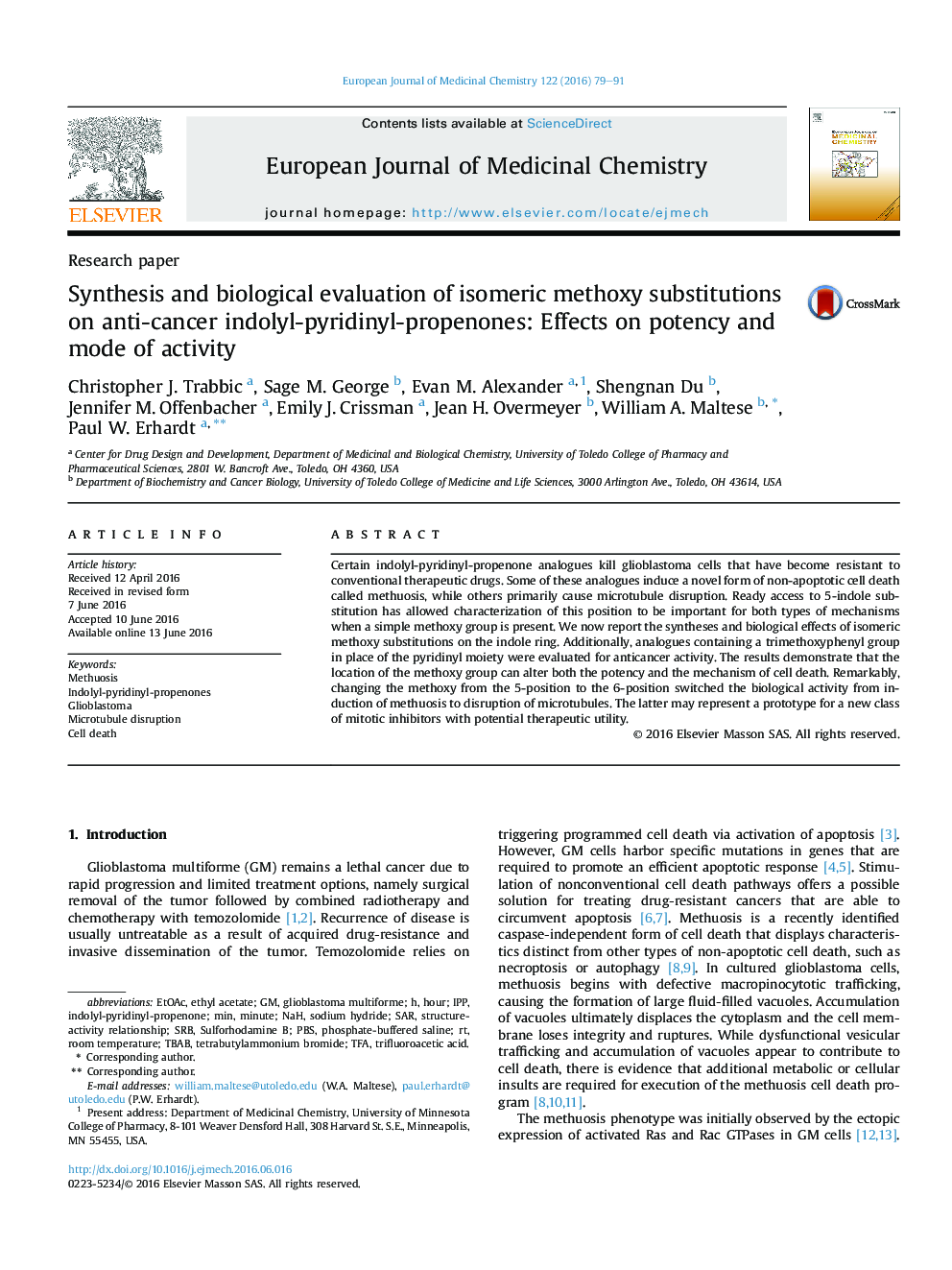| Article ID | Journal | Published Year | Pages | File Type |
|---|---|---|---|---|
| 1394907 | European Journal of Medicinal Chemistry | 2016 | 13 Pages |
•Indole-derived chalcones were synthesized and then evaluated in glioblastoma cells.•The position of indole methoxy induces either methuosis or microtubule disruption.•9b disrupts microtubules (GI50 90 nM) and 1a induces methuosis (GI50 2.32 μM).•Both activities were reduced when trimethoxyphenyl was substituted for pyridinyl.•The 6-methoxy analogue may be a prototype for a new class of mitotic inhibitors.
Certain indolyl-pyridinyl-propenone analogues kill glioblastoma cells that have become resistant to conventional therapeutic drugs. Some of these analogues induce a novel form of non-apoptotic cell death called methuosis, while others primarily cause microtubule disruption. Ready access to 5-indole substitution has allowed characterization of this position to be important for both types of mechanisms when a simple methoxy group is present. We now report the syntheses and biological effects of isomeric methoxy substitutions on the indole ring. Additionally, analogues containing a trimethoxyphenyl group in place of the pyridinyl moiety were evaluated for anticancer activity. The results demonstrate that the location of the methoxy group can alter both the potency and the mechanism of cell death. Remarkably, changing the methoxy from the 5-position to the 6-position switched the biological activity from induction of methuosis to disruption of microtubules. The latter may represent a prototype for a new class of mitotic inhibitors with potential therapeutic utility.
Graphical abstractFigure optionsDownload full-size imageDownload as PowerPoint slide
